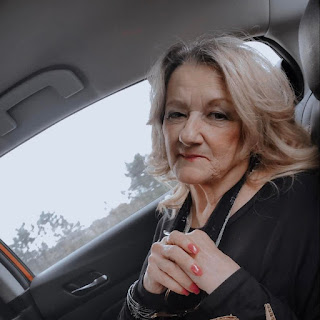From my perspective, tackling poverty as a health issue is a no-brainer. It’s vital front line health care groups, doctors, nurses, and other such professionals be more visible as players in developing solutions to problems that can be lessened if not eliminated with sustained collaborative efforts amongst those entities and the larger community. By virtue of their occupations, they have a finger on the pulse of what’s driving the cycles involved in making change and improving lives. Educating patients about healthier choices by virtue of their positive impact will, over time, break into the poverty cycle. Over an extended period, the chances to totally eradicate poverty in some segments can be a reality. It requires commitment. It requires all hands on deck.
Admittedly, the daily office caseload of our physicians is stretched as general practitioners reach retirement age; some stay on because they know their patients will be well and truly stuck if they close up shop. At some point leaving the post will happen, it’s an inevitable part of one’s work life, and doctors are no exception to the desire to retire once they feel their time of service must come to an end. In fact, two of my childhood neighbours, Drs. Bruce and Colin Lockhart are leaving their practices to settle into retirement. Bruce was a classmate of my older brother, Robert, while Colin shared a classroom with my youngest brother, Michael.
That they got degrees, became doctors and then set up shop in the place where they were born and raised speaks to their genuine love of the rural New Brunswick life. There’s something to be said for the pace.
While they and their colleagues are on the front lines and ‘out there’ caring for patients, conducting in office exams and consultations, dispensing prescriptions, ordering tests and following up with specialists, there are a few other things that can be done during an office visit that will improve quality of life for their patient and for the families of those in their care.
Asking the revealing lifestyle questions enhance the doctor-patient dynamic — what a patient had for dinner the evening before, or what he had for breakfast or what’s on the menu for later in the day is very telling about what goes on in his life. Asking how his day or week is going is another ‘tell’. If there are disclosures about stress with regard to food security, paying a utility bill or finding a better job, or finding a job at all, the physician can jump start the process of care, of help, by having a list of organisations and the names of contact people who can intake on behalf of their patient. Sometimes, people don’t really know what’s out there with regard to various programs that can improve situations in the long term — residential rehabilitation programs to make a home more accessible; home health care programs, Meals on Wheels, transportation services to get to appointments, and so on. Having a continuity of services in places goes a long way to improving overall health and wellness and that reduces patient stress and also reduces frequency of doctor and/or hospital visits. With this access an impact is made on the poverty reduction as patients become more relaxed and at peace with lifestyle changes that are showing positive results.
Physicians and other givers of care are in the perfect position to guide patients to more healthy ways of living that don’t cost a lot of money and ultimately reduce the tax on their own time and energies. What’s wonderful about these interactions is patients will then share what they learn through this process with others – perhaps family members or friends are struggling with the same concerns. It’s true – knowledge is power, and getting out from under is not out of the realm of possibility once a cohesive plan of action is put in place. Sadly, in some cases, poverty has become a significant multi-generational concern. Does life really have to be like that?
As a physician gets a picture of the home life of a patient, even in thumbnail sketch, s/he can then develop different prongs to the treatment approach. Key is not imposing personal belief systems with regard to a patient’s lifestyle choices. Better is to offer different options; ideally, as with guiding children, offering two choices works well. Taking a few minutes to discuss with the patient a few achievable goals is a good place to start – as example, encourage the patient to get outside and go for a walk or a wheel. If that’s not possible, just standing outside and doing some deep breathing exercises can help a body. Each day I engage in purposeful breathing exercises as well as quads and core strengthening exercises – all in aid of ensuring that I am still able to continue walking and maintaining my home on my own with only limited assistance. As we get healthier, we are inspired to venture outside our home to experience activities that don’t cost any money at all; in fact, they reward us with social connectedness which really does have impact on poverty reduction — comrades-in-arms joining together to do battle with a shared enemy. Together, we can rise above – it’s a daily commitment to making changes.
Happy New Year to all!
Carla MacInnis Rockwell is a freelance writer and disability rights advocate living outside Fredericton, NB with Miss Lexie, a rambunctious Maltese and Mr. Mr. Malcolm, a boisterous Havanese. She can be reached via email at Carla MacInnis Rockwell










